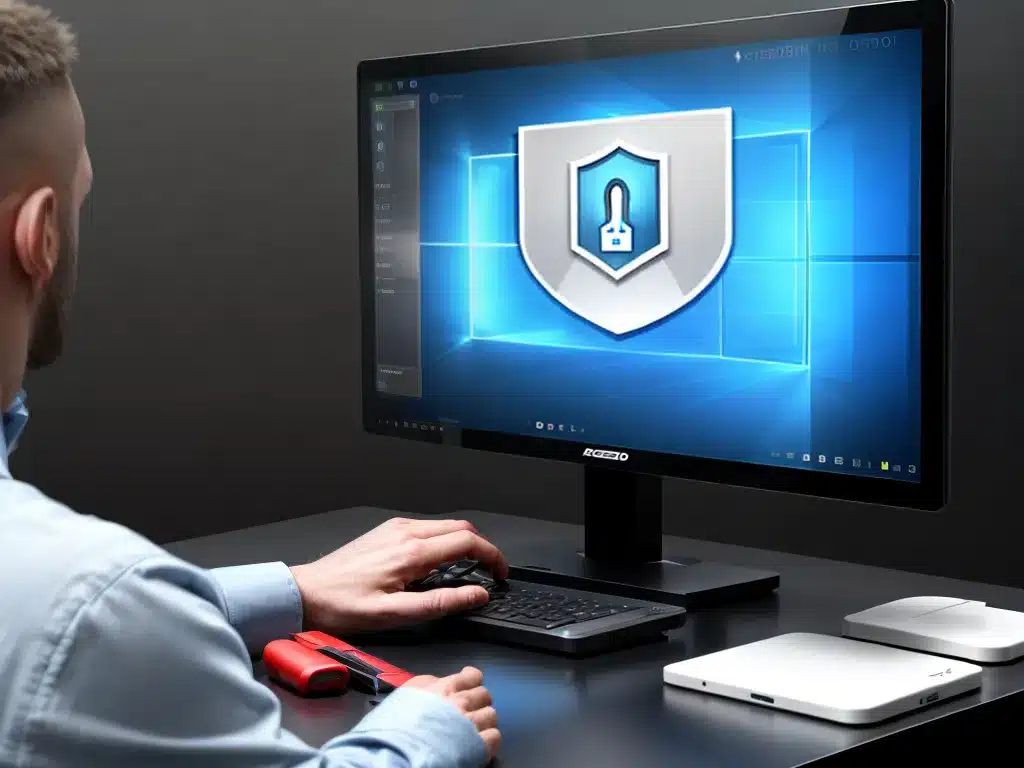
Remote desktop access allows users to remotely control their computers from other devices. While convenient, remote desktop introduces potential security risks that should be addressed. Here are some key security considerations when enabling remote desktop access:
Authentication
Use Strong Passwords
I should always use strong passwords for remote desktop accounts. Weak passwords are easy for hackers to guess, allowing them to easily gain remote access. To ensure strong passwords:
- I use at least 12 characters including upper and lowercase letters, numbers, and symbols
- I avoid using common words, phrases, or patterns
- I regularly update my passwords
Enable Multi-Factor Authentication
Multi-factor authentication (MFA) provides an extra layer of security by requiring more than just a password. With MFA enabled, I also need to provide something I have (like a code sent to my phone) when logging in. This makes it much harder for hackers to access my account.
Limit Logon Attempts
I should configure my remote desktop to lock out accounts after a certain number of failed logon attempts. This prevents brute force attacks where hackers try guessing passwords. I can allow 5 failed attempts before locking out the account for a duration like 15 minutes.
Network Security
Use a VPN
When accessing my computer’s remote desktop over the public internet, I should always use a virtual private network (VPN). A VPN encrypts my connection, hiding my network traffic from hackers. Without a VPN, remote sessions are vulnerable to man-in-the-middle attacks.
Restrict Access to Specific IPs
For added security, I can restrict remote desktop access to only my trusted IP addresses, like my home and office networks. This prevents hackers from gaining access from unknown locations. I can configure IP restrictions in the remote desktop settings.
Disable Remote Access When Not Needed
To minimize my attack surface, I should disable remote desktop access when I do not need it. Remote desktop services should not run all the time if they are not being used. I can easily enable it temporarily when I need remote access.
Session Security
Use Screen Locks
I should configure a short screen lock timeout for remote sessions. This automatically locks the remote computer if I walk away. Screen locks prevent unauthorized access if I accidentally leave a session unattended.
Disable File Transfers
File transfers allow copying files between my local and remote computers. I should keep this disabled if I do not need it. Attackers could exfiltrate sensitive data if they gain access to an open session.
Monitor Active Sessions
I need to periodically check my currently active remote desktop sessions and terminate any I do not recognize. This helps ensure no unauthorized connections are open without my knowledge.
Client Security
Keep Client Software Updated
I need to keep my remote desktop client software updated on all devices I use to access my computer. Software updates patch security vulnerabilities that could be exploited by attackers. Enabling auto-updates is recommended.
Use Antivirus Protection
My local system that I use to remote into my computer should have comprehensive antivirus software installed. This helps detect and block malware that could spread to my remote computer over the connection. I should keep my antivirus updated.
Verify Website SSL Certificates
If I access my remote desktop through a website, I should always verify that the site has a valid SSL certificate. This helps prevent man-in-the-middle attacks where I could be connecting to a malicious site impersonating my remote desktop portal. I can check for the green padlock icon and valid certificate issuer.
In summary, protecting my remote desktop with proper authentication, network security, session controls, and client-side protections can help minimize the risks of enabling remote access. I should follow cybersecurity best practices for remote desktop to prevent unauthorized access while still enjoying the flexibility of remote control.












